National Archeological Museum of Taranto ( a.k.a. “MArTA”)
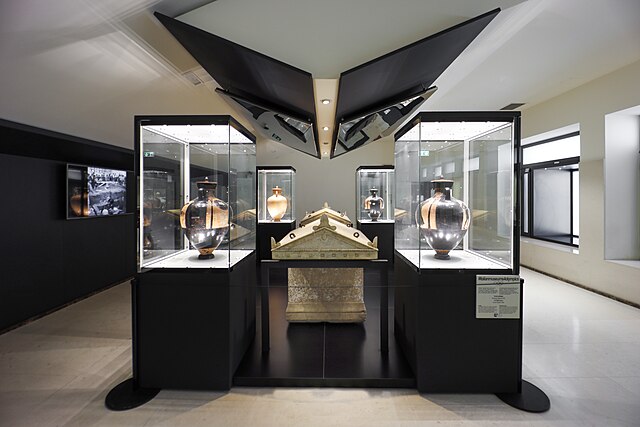
The National Archaeological Museum of Taranto, one of the most important in Italy, was established in 1887 and has occupied the former Convent of the Alcantarine Friars, or of San Pasquale, since its inception. The convent, built shortly after the mid-18th century, is strategically located in the heart of the city. This choice is not […]
Archaeological Park of the Messapian Walls
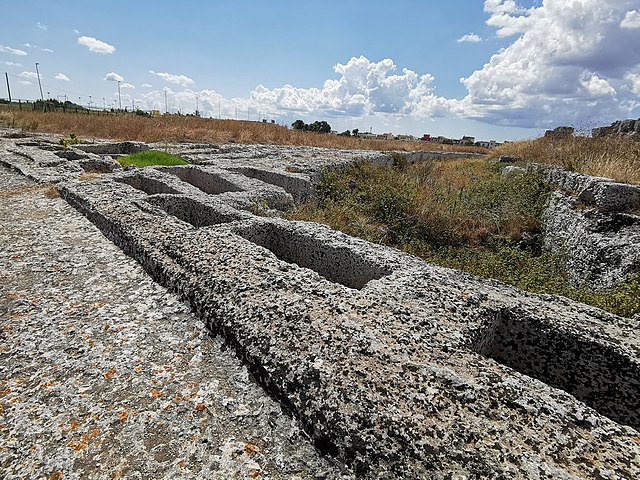
The Archaeological Park of the Messapian Walls in Manduria is a place of extraordinary historical and cultural value, telling the story of one of the most important cities of Magna Graecia. Founded by the Messapians, an Indo-European people who settled in the Salento area, Manduria was one of the most prosperous cities in the region, […]
The Svevo Castle
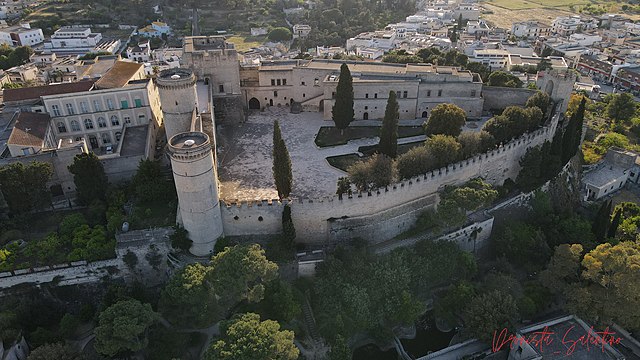
The Castle of Oria (in the province of Brindisi) occupies Vaglio Hill, the highest point of the city, at about 166 meters above sea level, on an area inhabited since the earliest periods. In fact, this area was occupied by the Messapian acropolis, which likely built its walls around the 6th century BC. As is […]
Jewish Ghetto and Former Synagogue
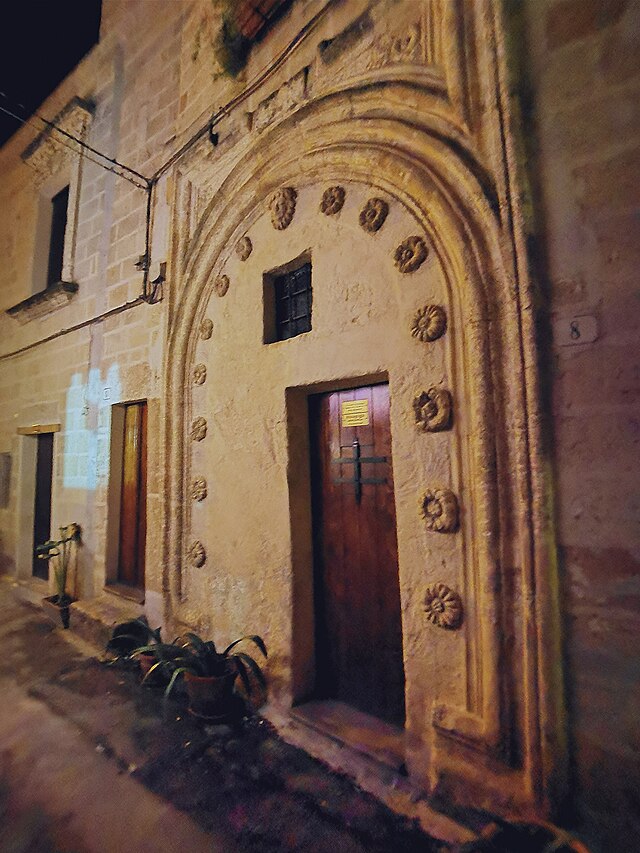
In Puglia, the Jews spread during the Norman-Swabian period. Wealthy communities were present in Lecce, as well as in Brindisi and Oria. The one in Taranto was also thriving, where in 1165 there were around three hundred individuals. Jewish presence was also found, during the reign of the Swabians, in towns like Trani, Barletta, Andria, […]
Duomo of Manduria
The Mother Church was built on the same site as the ancient medieval church, from which the two stylophore lions now placed at the sides of the entrance portal belong. The architecture of the structure has a clear Romanesque layout, on which late Gothic and Catalan influences were later superimposed. The construction began in the […]
Giannuzzi Corcioli Palace
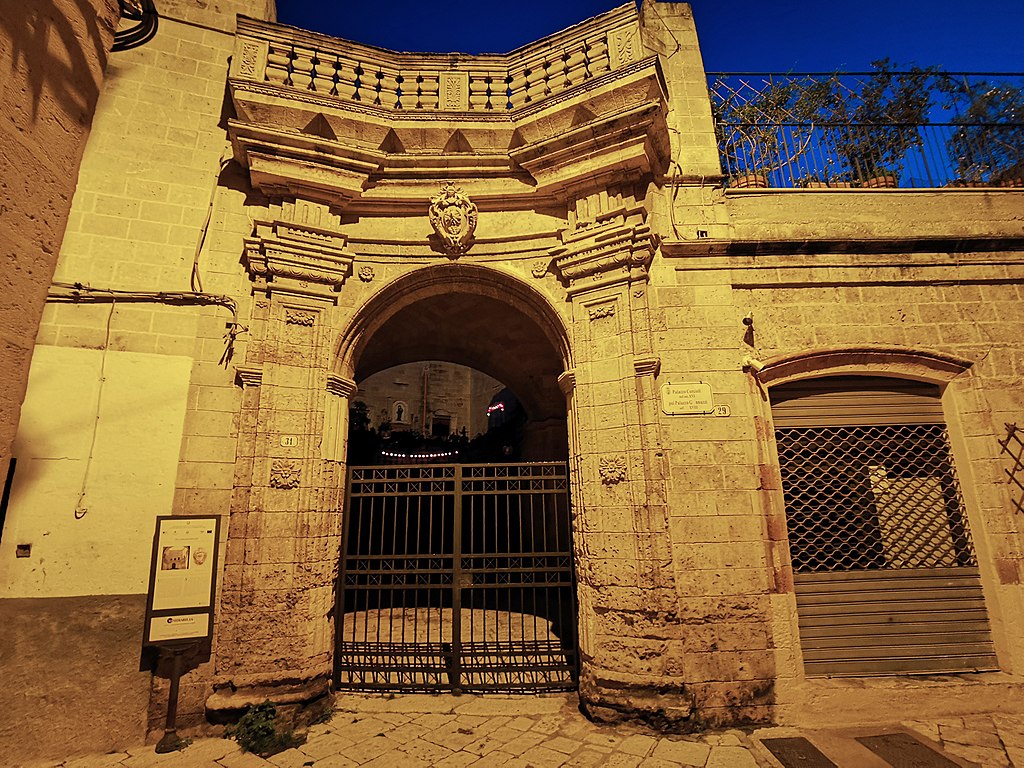
The Giannuzzi Palace is located in the historic center of Manduria and takes its name from the Giannuzzi family, who built it in the 16th century. It has since been renovated several times. The building features an imposing entrance portal with a concave shape, a full arch, and is topped with a rich family crest […]
Pliniano Spring
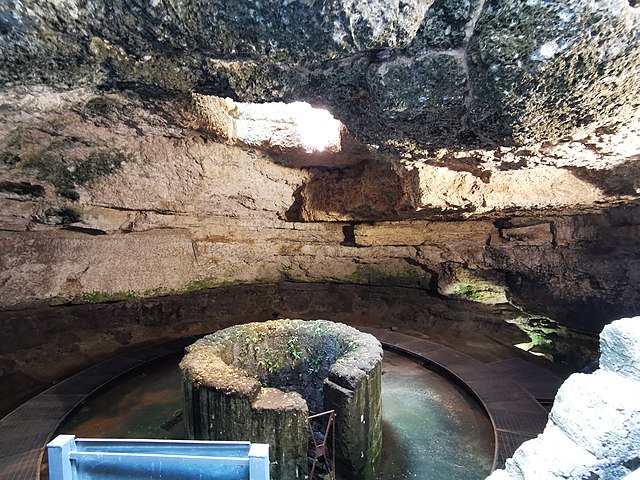
The Plinian Spring is named after Pliny the Elder, who, having either visited it directly or received information about it from others, describes it in his work Naturalis Historia. The water spring is hidden inside a cave about 18 meters in diameter, which can be accessed via a staircase. What makes the place even more […]
Museum of Civilization of Primitivo
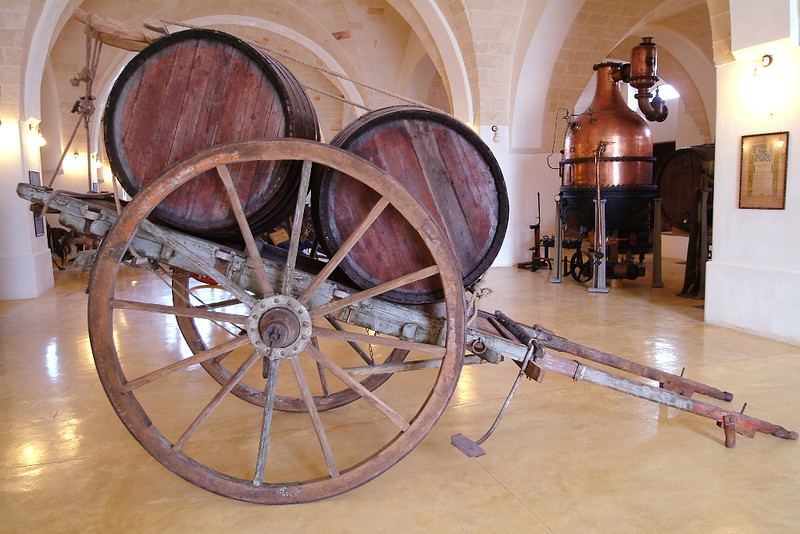
In Manduria, the Museum of Primitivo Wine Civilization, located within the Winery of the Manduria Producers, was created with a strong focus on preserving memory — the desire to not lose the traces of a cultural world perceived as being in deep transformation and thus at risk of being forgotten. However, the search for objects […]
ARAGONESE CASTLE (TARANTO)
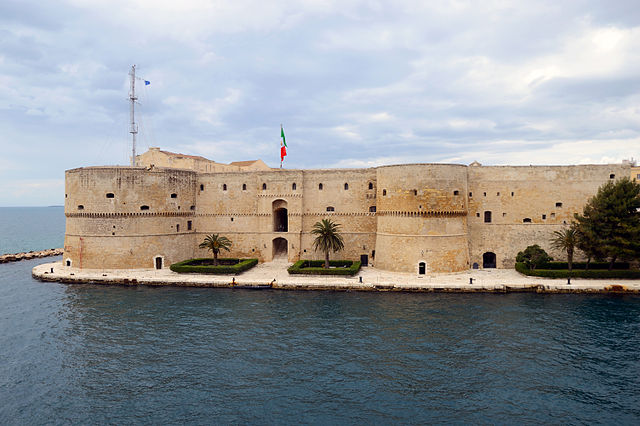
Inaugurated in 1492, the Aragonese Castle, a grandiose work of the late 15th century, stands on the area occupied in Byzantine times by a fortress placed to defend the medieval settlement. As we see it today, the castle retains four towers with evocative names: San Cristoforo, San Lorenzo, dell’Annunziata and della Bandiera, which guaranteed high […]

